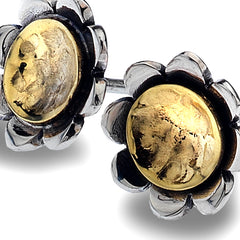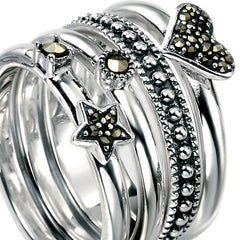Jewellery Repair Problems And How To Avoid Them

When Argenteus operated high street stores we offered a comprehensive repair service, but now that we're online only we can sadly no longer provide this. However after 22 years of dealing with repairs we thought it would be useful to pass on some of the things we've learned.
We've recently had a flurry of enquires through our online customer advice service who have had jewellery repairs which have gone wrong. Although very occasionally things can go awry, this is quite unusual. Most situations can be remedied and steps can be put in place beforehand to ensure a repair goes smoothly.
Not all jewellers will do repairs as it can be expensive and time consuming, but it's always worth checking out a couple to find out the potential costs and also how knowledgeable the staff seem.
Record all the details
Jewellers will need some personal details such as contact telephone number, email address and home address. Make sure you are quickly and easily contactable by phone and also email – this can be important if an unforeseen problem arises and needs to be checked before proceeding.  A written description of the item is essential for you and the jeweller doing the work. Point out the hallmark (if the item has one), any missing stones, scratches or dents. It's also advisable to take a photo of your jewellery with some point of reference to show when it was taken. You can also show this to the jeweller at the time.
A written description of the item is essential for you and the jeweller doing the work. Point out the hallmark (if the item has one), any missing stones, scratches or dents. It's also advisable to take a photo of your jewellery with some point of reference to show when it was taken. You can also show this to the jeweller at the time.
Small stones have been known to go missing during works and if you have it written down that all stones were present then it clarifies the situation later on. Clear photographs are also back this sort of thing up.
Finally a written comprehensive and easily understandable description of the work which needs to be carried out should be completed and agreed between you and the jeweller.
Common problems during repairs
There are problems that can arise during any works requiring heat. Firstly, most stones are susceptible to heat damage. Amber, pearls, mother-of-pearl, turquoise can scorch when subjected to high temperatures and they don't have to be close to the damage site which is being worked on.  A knowledgeable jeweller will point out if a stone needs to be removed during the repair process. They should also make you aware that a stone may break as well when being removed, especially with certain types of settings. You need to be clear on if you are happy to take this risk.
A knowledgeable jeweller will point out if a stone needs to be removed during the repair process. They should also make you aware that a stone may break as well when being removed, especially with certain types of settings. You need to be clear on if you are happy to take this risk.
Sometimes stones have hairline fractures which are not noticeable to the naked eye and can only be seen using a magnifying loupe or by carefully running a fingernail over the stone surface. It is worth asking to double check the stone state using these methods as prior discussion can save arguments (and shocks) later on.
Special finishes Sometimes oxidisation is a deliberate part of the overall design of the item and this can be lost during some repair processes. We've had jewellery which hasn't been cleaned thoroughly that has become oxidised over time and the customer has forgotten the original item was actually quite shiny! This is most important when an earring needs repairing as they won't match after repair. If only one earring is being repaired give the other one to the workshop as well so that they can ensure they still match after the work has been completed.
Sometimes oxidisation is a deliberate part of the overall design of the item and this can be lost during some repair processes. We've had jewellery which hasn't been cleaned thoroughly that has become oxidised over time and the customer has forgotten the original item was actually quite shiny! This is most important when an earring needs repairing as they won't match after repair. If only one earring is being repaired give the other one to the workshop as well so that they can ensure they still match after the work has been completed.
Sizes and lengths If a ring needs resizing, make sure to know which finger is to be sized and which hand – left or right. Each finger can vary and the dominant hand is usually slightly larger than the other. It's advisable the jeweller makes a note of which finger has been measured and also which hand.
If a ring needs resizing, make sure to know which finger is to be sized and which hand – left or right. Each finger can vary and the dominant hand is usually slightly larger than the other. It's advisable the jeweller makes a note of which finger has been measured and also which hand.
Chains, bracelets and necklaces that are broken in several pieces need fitting together to see if any parts are missing and a reference drawing made if the design is complex.
An accurate measurement of the length should be made and agreed by both parties. If a piece is missing now is the time to discuss the problem and decide how and if it can be resolved. Likewise if you want the length to be altered this is the time to discuss this work with jeweller to see what can be done and how the work will affect the overall look of the necklace.
Restringing necklaces It's always a good idea to regularly inspect pearl necklaces which have frayed strings to see if they need to be restrung. Bear in mind that the silk thread used, over time, will stretch, fray and eventually and break.
It's always a good idea to regularly inspect pearl necklaces which have frayed strings to see if they need to be restrung. Bear in mind that the silk thread used, over time, will stretch, fray and eventually and break.
If you have a 50 piece pearl necklace it will have stretched by a few centimetres over the years. If it's to be restrung it will come back shorter as the restringing will be quite tight. Check with the jeweller about length and ask if an extender chain can be purchased to adjust the necklace to the length you are happy with. Bear in mind that mixing old pearls with new pearls will be very difficult due to the difference in colour and shape.
Costs
People are often shocked by the cost of some repairs these days compared to the price of the jewellery when purchased. Efficient manufacturing costs have driven down the price of jewellery but nearly all repairs have to be undertaken by hand, in off-site workshops and by experienced jewellers.
Repairing jewellery is often fiddly and time consuming. Sometimes a repair goes wrong when no one is to blame. A hidden air bubble in the metal can suddenly explode, a stone fractures, or there is an area of damage which wasn't spotted beforehand and only became obvious once work has commenced.  Working on gold jewellery is usually easier as there is not so much to clean up afterwards, and silver is more time-consuming due to it needing more polishing after being repaired. Silver is also an excellent conductor so more care is needed during any process involving heat.
Working on gold jewellery is usually easier as there is not so much to clean up afterwards, and silver is more time-consuming due to it needing more polishing after being repaired. Silver is also an excellent conductor so more care is needed during any process involving heat.
Lastly, you have to balance up the cost of repair with the cost of the item needing work. Silver isn't an expensive metal compared with gold but sentimentality is another issue. An inherited piece of jewellery from a loved one has no price tag and this also needs to be discussed with the workshop.
Old jewellery can be a lot more fragile due to wear and tear and the potential for damage and the extra care needed has to be factored into the cost. Only you, the customer, can make the final decision as to an item's worth to you. Take your time and listen to the jeweller, they have the experience and knowledge, and if you're not happy always get a second opinion.
If you follow some simple rules and ensure you use a reputable jeweller you should soon be able to enjoy wearing the repaired item again!
